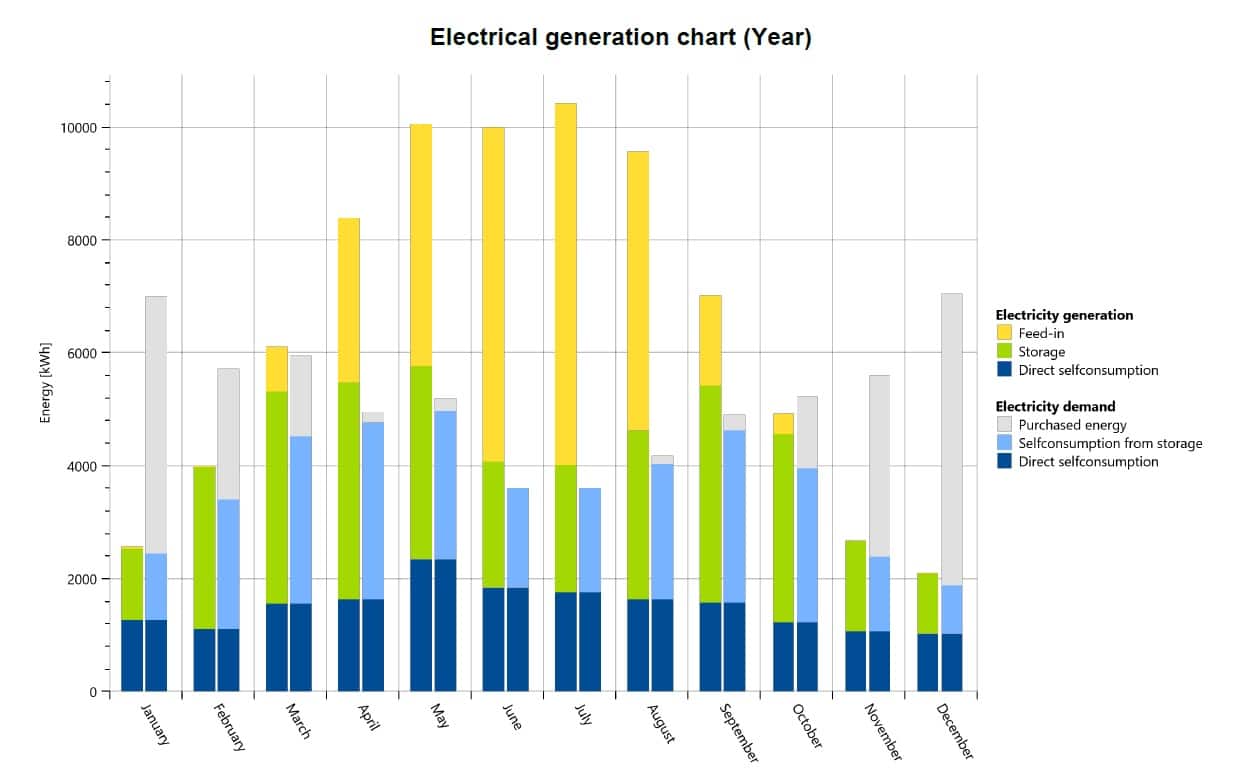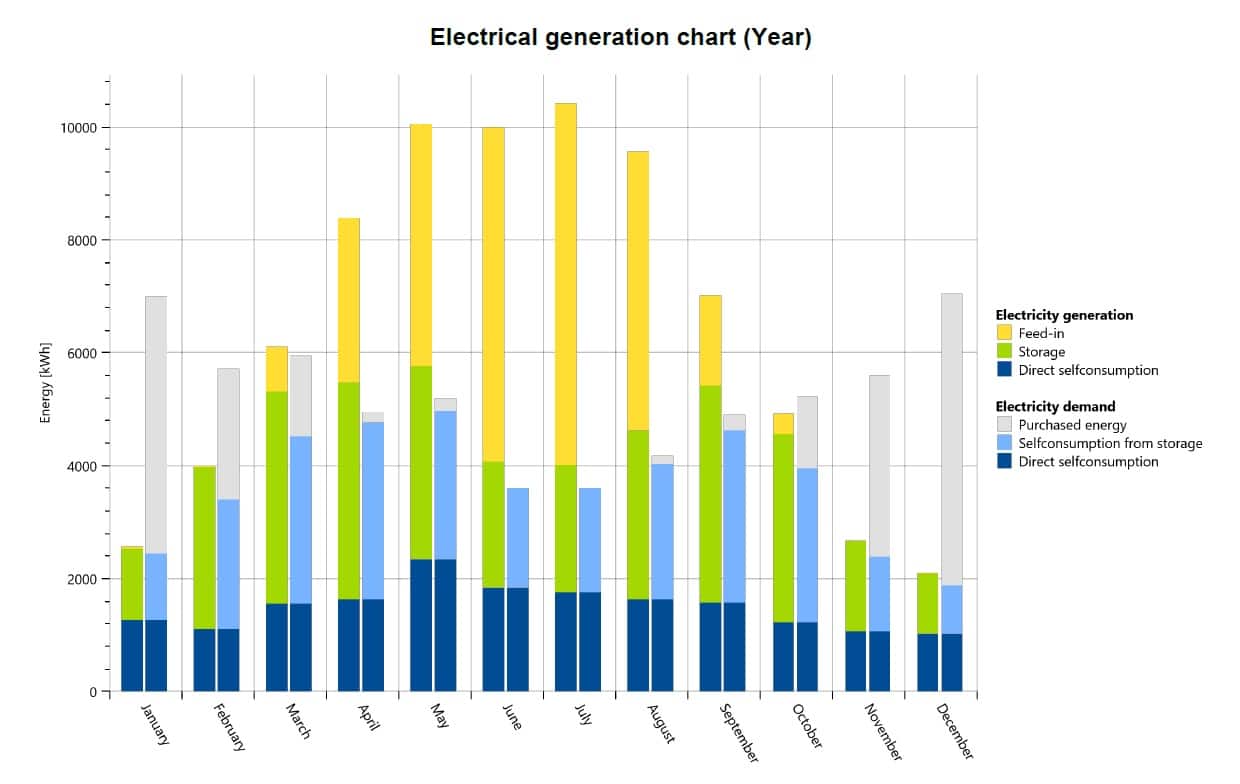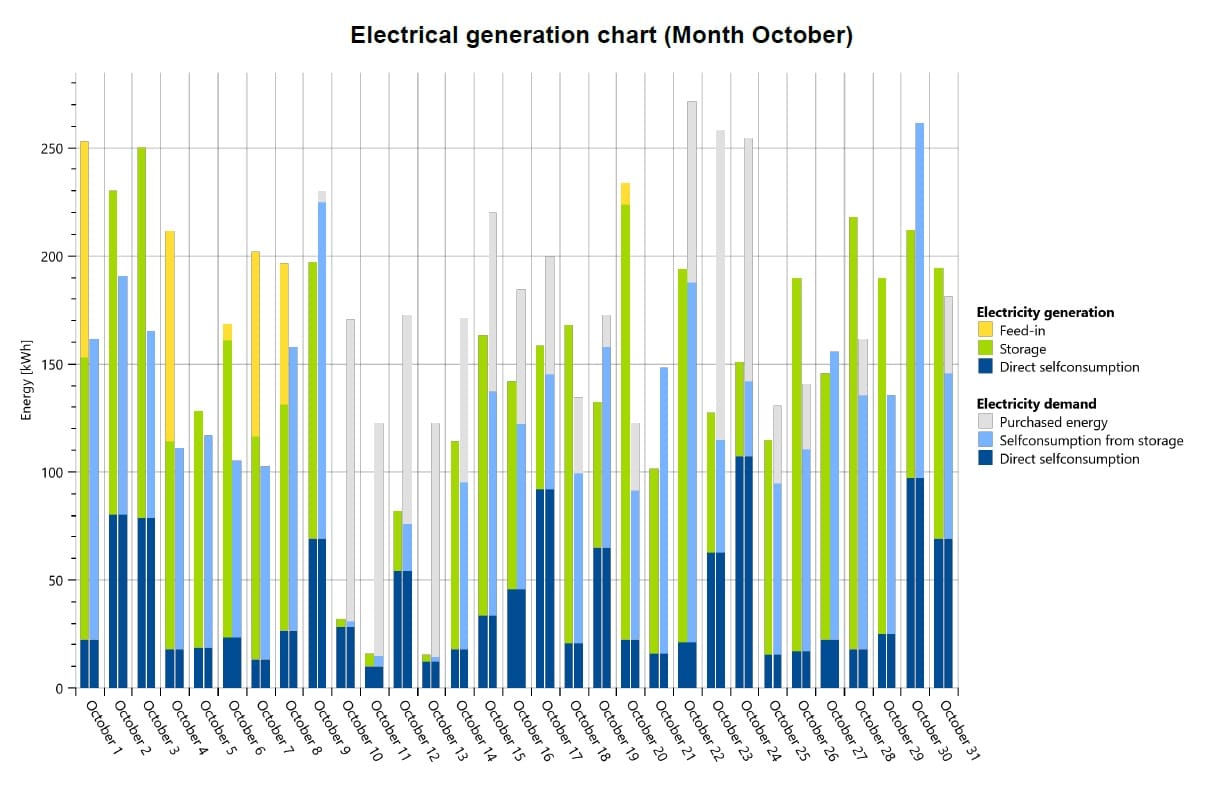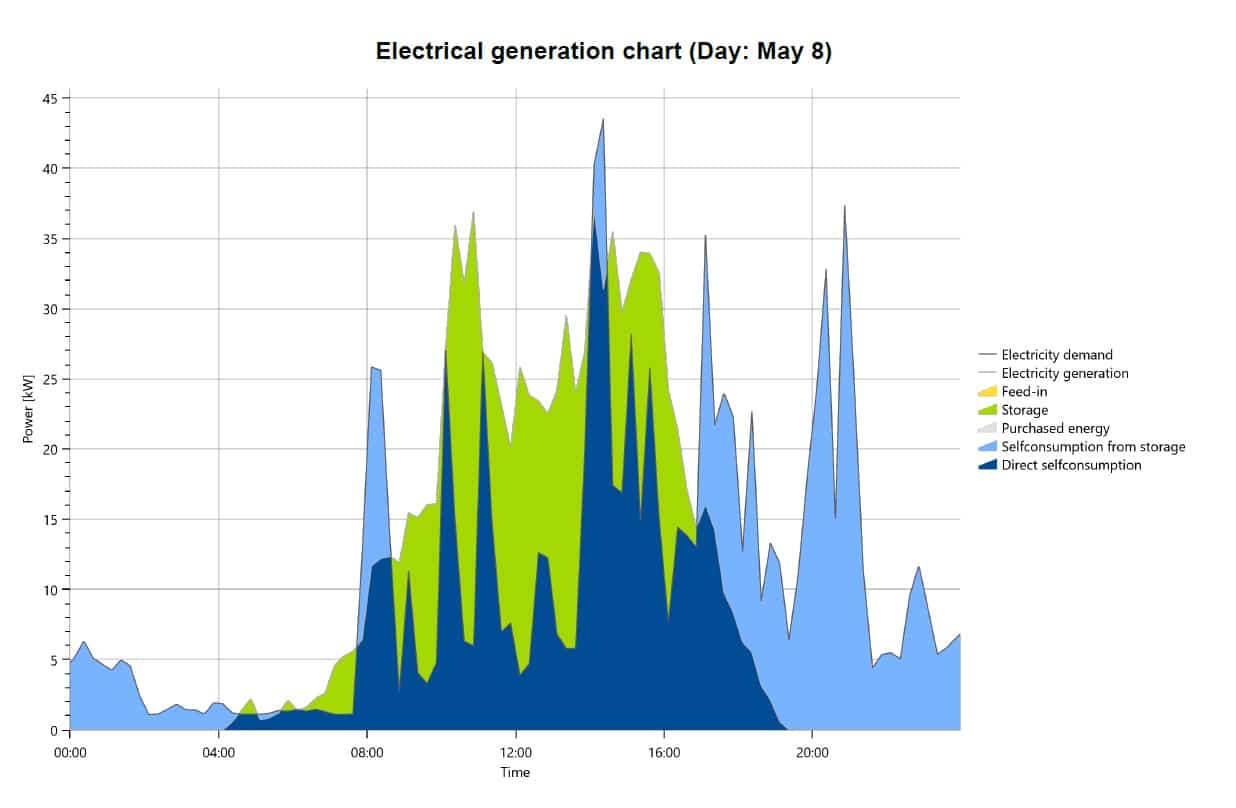Small and medium enterprises (SMEs) are an essential part of the global economy, and they play a vital role in reducing greenhouse gas emissions and combating climate change. One of the ways SMEs can contribute to a more sustainable future is by adopting renewable energy solutions such as solar panels, energy storage systems, and electric vehicle (EV) charging infrastructure. While the benefits of renewable energy are clear, SMEs with EV fleets may face unique challenges in sizing their solar and storage systems. In this guide, I`ll explore how to determine the right size for solar panels, energy storage, and EV charging infrastructure for SMEs with EV fleets.
Table of contents:
- Understanding Your Energy Needs: Assessing Your SME’s Energy Usage
- Sizing Solar Panels: Calculating Your SME’s Solar Potential
- Energy Storage System Sizing: Matching Your Storage Capacity with Your Energy Demand
- EV Charging Infrastructure: Sizing Your Chargers to Meet Your Fleet’s Needs
- Maximizing the Benefits of Renewable Energy: Combining Solar, Storage, and EV Charging for Optimal Results
Understanding Your Energy Needs: Assessing Your SME’s Energy Usage
Before sizing your solar panels, energy storage system, and EV charging infrastructure, it’s essential to assess your SME’s energy usage. Understanding your energy consumption patterns and requirements is critical to determine the right size for your renewable energy solutions.
To begin, start by gathering data on your SME’s energy usage over the past year. This data can be obtained from your utility bills or from an energy monitoring system if you have one in place. Once you have the data, analyze it to identify your SME’s energy consumption patterns.
Look for trends in energy usage throughout the day, week, and year. For instance, you may notice that your SME consumes more energy during peak hours, or that energy demand is higher during certain seasons. This information can help you determine the optimal size for your solar panels and energy storage system to meet your energy needs.
Additionally, consider any plans for expansion or changes in your SME’s energy demands in the future. This information can help you size your renewable energy solutions to accommodate future growth while ensuring that your SME has acess to reliable and sustainable energy.
To obtain a more detailed and accurate picture of your SME’s energy usage, consider asking your operator (electricity provider) to provide you with a 15-minute interval usage profile. This data will give you a more granular view of your energy consumption patterns, allowing you to identify peak energy demand times and other usage trends. Armed with this information, you can more accurately size your solar panels and energy storage system to meet your SME’s specific energy needs!!!
Sizing Solar Panels: Calculating Your SME’s Solar Potential
Now that we have a better understanding of your SME’s solar potential, let’s talk about energy storage. Energy storage systems are an essential part of any renewable energy solution because they allow you to store excess energy generated by your solar panels for use when the sun isn’t shining.
When it comes to sizing your energy storage system, the key is to match your storage capacity with your energy demand. This ensures that you have enough stored energy to power your SME during period s of low solar generation or high energy demand.
To determine the right size for your energy storage system, you’ll need to consider your SME’s energy usage patterns and any plans for expansion or changes in energy demand in the future. A reputable energy storage expert can helpp you calculate the right storage capacity for your specific needs.
In addition to sizing your energy storage system, it’s important to consider the type of energy storage technology that best suits your SME’s needs. There are various types of energy storage technologies available, including lithium-ion and LFP batteries, flow batteries, and thermal energy storage systems, each with its own advantages and disadvantages.
Case Study – restaurant in Poland
The small restaurant in Poland is a great example of how an SME can benefit from a renewable energy solution. With a 63 kWp solar system and a 50 kW, 200 kWh energy storage system, the restaurant is well-equipped to generate and store renewable energy for use during peak energy demand times, which mostly occur in the evenings.
The solar system is appropriately sized for the SME’s annual energy usage of 62,994 kWh, and the energy storage system has enough capacity to power the restaurant during periods of low solar generation or high energy demand. Additionally, the owner’s Audi e-tron GT, with a battery capacity of 93 kWh, can be charged using the renewable energy generated by the solar system.
The small restaurant in Poland has achieved an impressive degree of energy independence with its renewable energy solution. Without the energy storage system, the restaurant was able to meet 28.63% of its energy demand through solar generation alone. However, with the 50 kW, 200 kWh energy storage system in place, the degree of energy independence has increased to 69.88%.
Additionally, the percentage of self-consumption has increased significantly with the addition of the energy storage system. Without the energy storage system, the restaurant was able to consume only 23.18% of the solar energy generated. However, with the energy storage system in place, the percentage of self-consumption has increased to 64.93%.
These figures demonstrate the significant impact that an energy storage system can have on a renewable energy solution. By storing excess solar energy generated during peak production times, the restaurant is able to use the stored energy during peak demand times, resulting in a much higher degree of energy independence and self-consumption.
Overall, this SME’s renewable energy solution is a great example of how small businesses can benefit from adopting sustainable energy practices. The solar and energy storage system not only help the restaurant reduce its carbon footprint but also lower its energy costs by relying less on grid electricity during peak demand times. Additionally, by occasionally charging the Audi e-tron GT using renewable energy, the owner is able to support sustainable transportation practices as well.
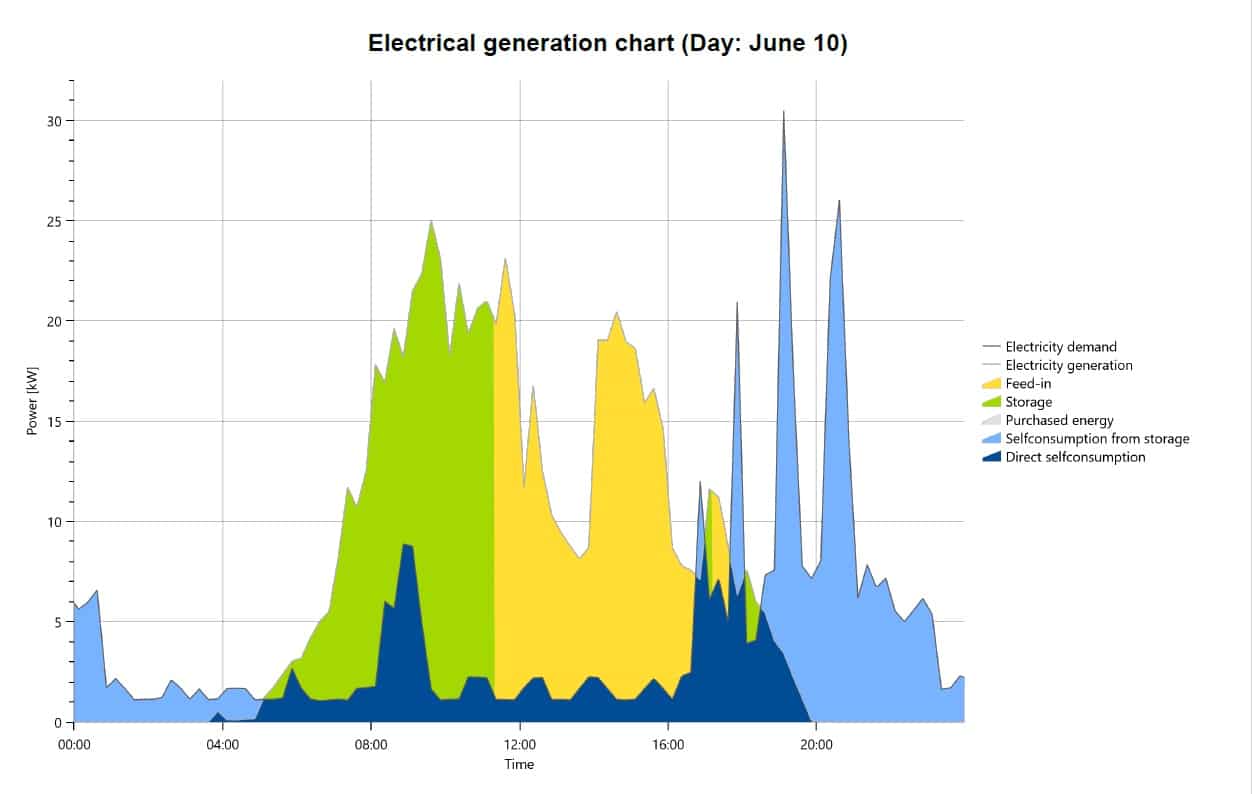
Energy Storage System Sizing: Matching Your Storage Capacity with Your Energy Demand
Now, let’s talk about energy storage system sizing. The key is to match your storage capacity with your energy demand. This ensures that you have enough stored energy to power your home or business during periods of low solar generation or high energy demand.
Steps:
Step 1: Understand your energy usage patterns
To properly size your energy storage system, you need to have a good understanding of your energy usage patterns. This includes your peak energy demand times, as well as any fluctuations in energy demand throughout the day or year. You can obtain this data from your utility billss or from an energymonitoring system.
Step 2: Determine your energy storage needs
Once you have a good understanding of your energy usage patterns, you can determine your energy storage needs. This involves calculating the amount of energy you need to store to power your home or business during periods of low solar generation or high energy demand. We use dedicated software!
Step 3: Choose the right type of energy storage technology
There are various types of energy storage technologies available, including lithium-ion batteries, flow batteries, and thermal energy storage systems. Each type of technology has its own advantages and disa dvantages, so it’s important to choose the one that best suits your needs.
Step 4: Consider your available space
Energy storage systems can take up a considerable amount of space, so it’s important to consider your available space when sizing your system. This includes both indoor and outdoor space, as well as any zoning or building regulations that may affect the size of your system.
To determine the right size for your energy storage system, you’ll need to consider your energy usage patterns and any plans for expansion or changes in energy demand in the future. A reputable energy storage expert can help you calculate the right storage capacity for your specific needs. We can do it for you!
EV Charging Infrastructure: Sizing Your Chargers to Meet Your Fleet’s Needs
One of the most critical components of EV charging infrastructure is charger sizing. This involves determining the appropriate charging rate and number of chargers needed to meet your fleet’s charging demands.
So, how do you size your EV chargers correctly? Let’s break it down step-by-step.
Step 1: Determine your fleet’s charging requirements
To properly size your chargers, you need to determine your fleet’s charging requirements. This includes the number of EVs in your fleet, their battery sizes, and the daily distance traveled.
Step 2: Choose the right charger type
There are various types of EV chargers available, including Level 1, Level 2, and DC fast chargers. Each type of charger has different charging rates and requires different infrastructure, so it’s important to choose the one that best suits your fleet’s needs.
Step 3: Calculate the required charging rate
Once you have determined your fleet’s charging requirements and chosen the right charger type, you can calculate the required charging rate. This involves considering factors such as the available charging time, battery size, and the required daily range.
Step 4: Determine the number of chargers needed
Based on the required charging rate, you can determine the number of chargers needed to meet your fleet’s charging demands. This involves considering factors such as the available parking spaces, charging time, and peak demand times.
In areas with a poor grid or no grid connection possibility, energy storage systems are essential for providing reliable access to electricity. These areas may be located in remote or rural regions, or they may be situated in developing countries with limited infrastructure.
In these areas, energy storage systems can be used in conjunction with renewable energy sources like solar panels or wind turbines to provide a reliable source of electricity. By storing excesss energy generated during periods of high renewable energy production, energy storage systems can be used to provide electricity during times when renewable energy production is low or non-existent.
Energy storage systems are particularly important in areas with poo r or no grid infrastructure because they can provide a reliable source of power without the need for expensive and complex grid infrastructure. In many cases, the cost of building and maintaining grid infrastructure in remote or rural areas can be prohibitively expensive, making energy storage a more cost-effective solution.
Maximizing the Benefits of Renewable Energy: Combining Solar, Storage, and EV Charging for Optimal Results
To truly maximize the benefits of renewable energy, it’s important to combine solar, storage, and EV charging solutions for optimal results. This integration can provide a range of benefits, including lower energy costs, increased energy independence, and reduced carbon emissions.
By combining solar panels with an energy storage system, excess energy generated during peak solar production times can be stored and used to power your home or business during periods of low solar generation or high energy demand. This results in a higher degree of energy independence and self consumption, reducing your reliance on grid electricity and lowering your energy costs.
Furthermore, by integrating an EV charging solution into your renewable energy system, you can charge your EV using the renewable energy generated by your solar panels and stored in your energy storage system. This allows you to reduce your reliance on fossil fuels for transportation and support sustainable transportation practices!!!

